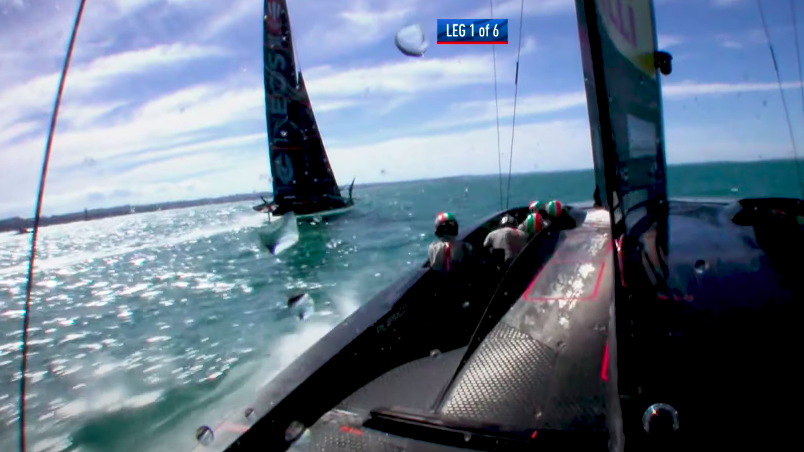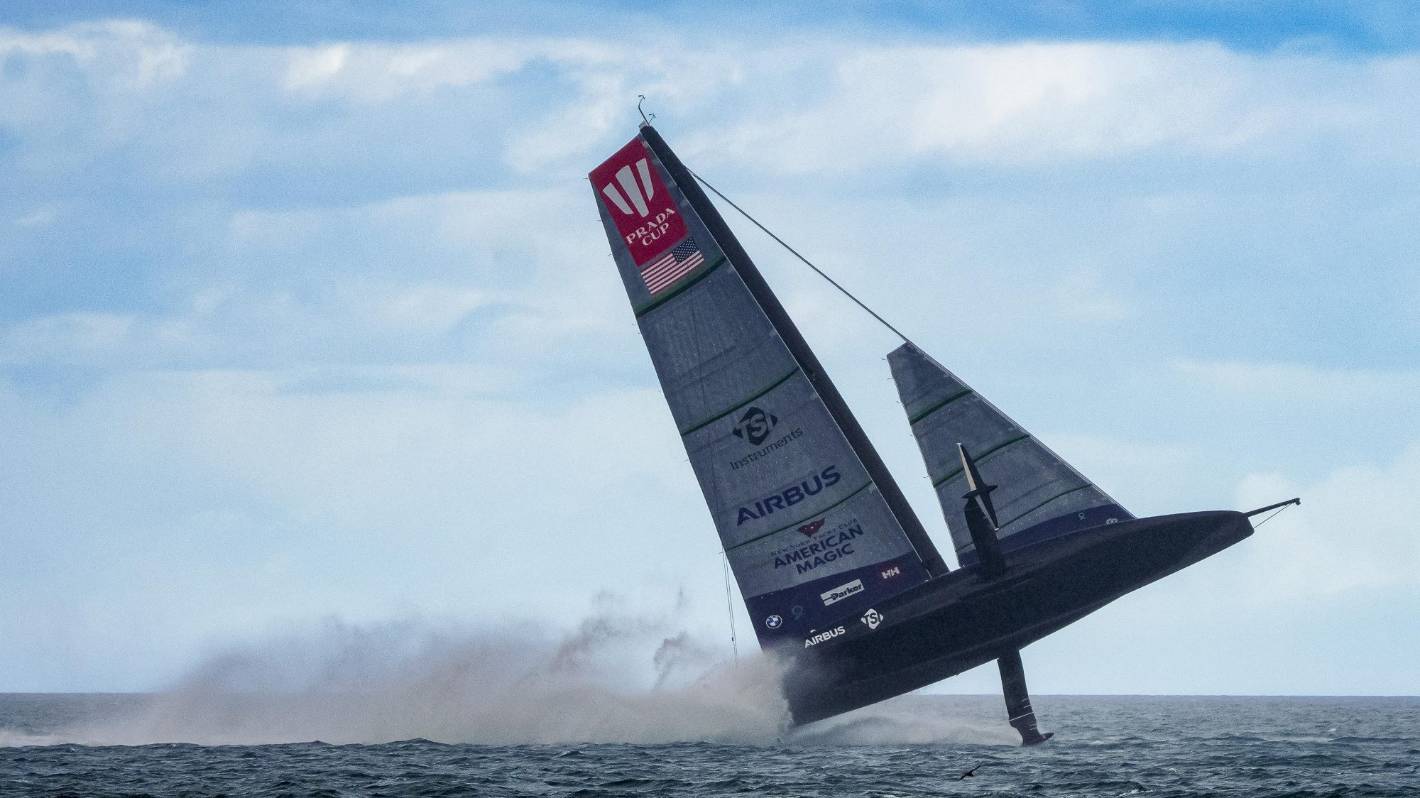Star sailors or Laser sailors on the other hand will keep sailing around while waiting between races with sails sheeted in because they don't want to flap their fragile sails to death by sitting around in one spot for too long. Many top Star and Laser sailors even train with brand new sails because they think the boat feels so different with old ones, that it is virtually pointless training with anything but good sails. But that is taking things to extremes. For the vast majority of us lesser mortals, practising with old sails and keeping our best in reserve for major events is still the best way to go.
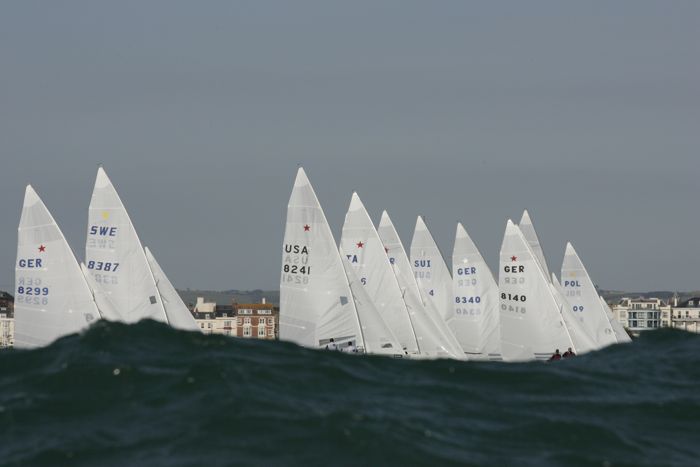
© Ingrid Abery: Star sails don't last very long at the top level
Before you spend out on hundreds of pounds on a crinkly new set of sails, just ask yourself if the same amount of money could be spent more effectively in another way. Again, much depends on your particular circumstances and abilities, but if you're a middle- to back-of-the-fleet club sailor who capsizes once or twice every weekend, perhaps the money would be better spent on hiring a coach to help you improve your technique.
There is nothing more rewarding than beating your rivals through superior skill and inferior equipment. And there is nothing more humiliating than having the best gear and coming last with it. The phrase, ‘All the gear and no idea' springs to mind. So be honest with yourself, and do some quick analysis of where you think £500 might be spent most effectively in your sailing. If you're still set on spending the money on sails, read on.
Whose sails to use?
If you race a tightly controlled one-design, then the decision about sails is much simpler. If you sails are knackered, you just go ahead and order some new ones from the supplier. At the other extreme are development classes like the International 14 and National 12, where you can order your sails from any number of different sailmakers, and where they must be tailored made to the dimensions of your boat and rig.
Deciding which sails to buy can be a confusing process. Do you buy the same sails as the reigning national champion, do you buy the cheapest, do you buy from your nearest sailmaker or the sailmaker that you get on with the best? These are all valid considerations, and there is no easy answer. Some of the big sailmakers have now shifted all their dinghy sail production to Asia, such as North with their massive loft in Sri Lanka, or Hyde Sails with their facility in the Philippines. If you want to go through a sail development programme and incorporate a few new ideas of your own into your next suit of sails, then perhaps a local sailmaker is more appealing.
If you don't want to put too much thought into development and merely want something that's on the pace, then opting for the same set as the national champion is not a bad way to go. But just bear in mind any differences in crew weight. If the national champion is 30 kilos lighter than you, can you be sure the same sails are going to work for you? And be sure to check if his sails are compatible with your mast. A change of sails sometimes necessitates a change of mast too.
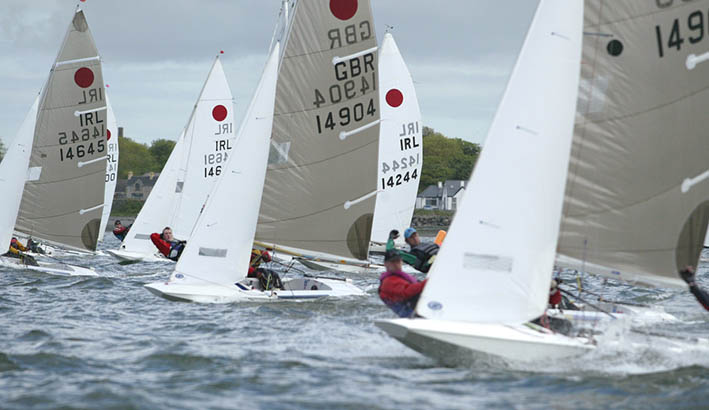
Fireballs use both Dacron and Mylar sails to win championships
Dacron v laminate
Replacing sails regularly in a class with conventional semi-battened sails constructed of Dacron is more important than in classes that allow more modern, lower-stretch laminated cloths such as Mylar or Kevlar. Even better if they're fully battened, as this helps the sail retain its shape for longer. But it's interesting that in classes where both types of cloth are allowed that Dacron still finds favour with some top sailors. Sailmaker and multiple champion Ian Pinnell opts for Dacron in his 505 jib rather than Mylar/Kevlar. While some sailmakers still swear that a modern laminated jib is faster than its Dacron equivalent, the advantage is marginal in a dinghy such as the 505. And what the Dacron may lack in ultimate speed it more than compensates for by being harder wearing.
Graham Scott makes sails for the Contender under his Wavelength brand, both in Mylar and Dacron. Scott - a multi-champion in the Contender himself - prefers the versatility of Dacron through the wind range.
Chichester sailmaker Dick Batt gives his view on Mylar versus Dacron. "In a boat like the International 14, we've seen the sailplan become non-overlapping with most boats now having a self-tacking jib. You can't furl them, the jibs are fully battened, and so the sail only has to put up with the minimum of flogging. So it's fine to use Mylar in 14s." But for any boat with an overlapping sail plan, Batt would prescribe a Dacron jib, because Mylar delaminates very quickly with all the beating it gets flogging around shrouds and the front face of the mast.
"If you have to make a tall, narrow jib then Mylar is not always the best cloth for that circumstance," adds Batt. "It's why you hardly ever see Merlin jibs made out of Mylar." And the Fireball is another case in point, where sailors and sailmakers seem divided over the merits of Dacron versus Mylar. But for mainsails, where flogging is less of a problem, then the Mylar/Kevlar option is nearly always superior to its Dacron equivalent. It might be a little more expensive but a Kevlar sail can last up to twice as long, certainly in terms of its competitive lifespan.
Another area where Dacron remains one of the best options is in singlehanded boats with unstayed rigs. "It's difficult to build a Mylar sail that can cope with all the mast bend variations of an unstayed rig," explains Batt. "You can make it work for the middle of the range, but it's hard to get the sail working in the very light and very strong winds. Dacron copes better with all the mast bend variations because it's a softer and more plyable cloth." The notable exception, however, is the Finn Olympic singlehander. "They've got a relatively stiff carbon mast," says Batt, "so it's easier to make a Mylar sail for that rig."
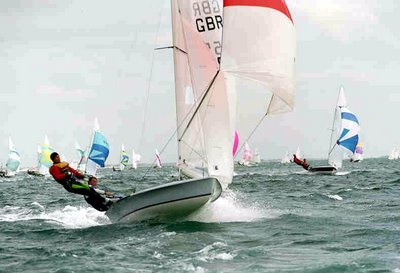
Fast while they last: the competitive life of a conventional spinnaker is not that long
Spinnakers and Gennakers
Conventional spinnakers tend not to last that long because of the dual roles that each leech is asked to perform. Working as the trailing edge of the sail does not place too much stress on a leech, but when you gybe and that leech now becomes the luff of the spinnaker, the stress is much higher on the cloth - particularly on a tight reach. Over time, the cloth around the leeches will stretch while the leech tapes will stay more or less the same. The result is that the leeches tend to curl in and the sail has now lost much of its original efficient shape.
Asymmetric spinnakers or gennakers, on the other hand, always have one edge operating as the leading edge, the luff, and the other edge always operating as the trailing edge leech. Because the sail is not being asked to assume the dual function of a conventional spinnaker, the sailmaker can design a more sturdy luff and a relatively delicate leech.
So the competitive lives of a spinnaker and gennaker are very different. A spinnaker becomes markedly slower as the cloth ages and the leech tapes start to hook, whereas the performance decrease of a gennaker is much less significant over time. They never really get slower in a straight line, but where an older gennaker loses out to a newer one is in ease of handling. As the cloth loses its waterproof finish, an old gennaker will tend to stick to the jib during a gybe and be more difficult to pull in and out of a chute.
In broad terms, then, you could say that a good time to invest in a new spinnaker is when the leeches start to curl in badly, while a good time to buy a new gennaker is when the old one has got a bit soggy and starts to affect your boathandling manoeuvres. Overall, with their hi-tech upwind sails and downwind gennakers, the sails on the newer breed of asymmetric boats tend to last better than the older, Dacron-based classes with symmetrical spinnakers.

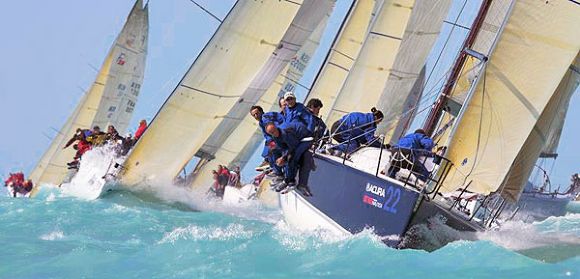 In the second part of our interview with a top sailmaker from Australia, Stewart Gray talks about the tell-tale signs of when you need to replace sails with new ones, and why high-tech sails demand that you use high-tech halyards...
In the second part of our interview with a top sailmaker from Australia, Stewart Gray talks about the tell-tale signs of when you need to replace sails with new ones, and why high-tech sails demand that you use high-tech halyards...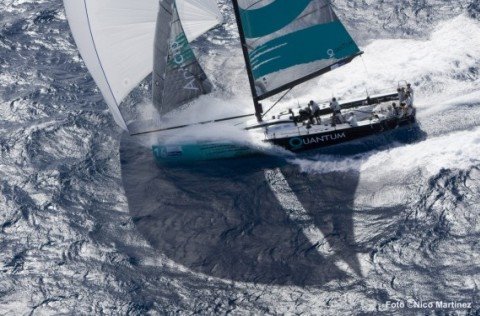 SailJuice interviewed top freelance sailmaker from Australia, Stewart Gray, for his advice on buying sails for keelboats. Stewart has worked at all levels of the sport from small keelboats through to the America's Cup and the Volvo Ocean Race. In Part One, Stewart talks about how to select the right sailmaker, the best time to buy sails, and why the climate could determine whether or not your sails are race legal...
SailJuice interviewed top freelance sailmaker from Australia, Stewart Gray, for his advice on buying sails for keelboats. Stewart has worked at all levels of the sport from small keelboats through to the America's Cup and the Volvo Ocean Race. In Part One, Stewart talks about how to select the right sailmaker, the best time to buy sails, and why the climate could determine whether or not your sails are race legal...